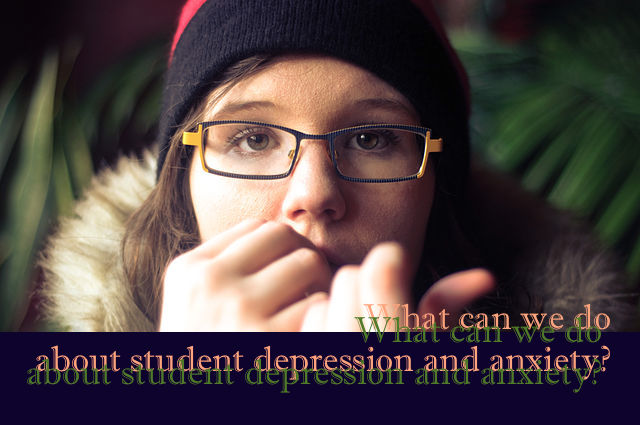 From the New York Times: Is the Drive for Success Making our Children Sick?
From the New York Times: Is the Drive for Success Making our Children Sick?
Now, I am never one to go in for articles that use rhetorical questions as titles, but I clicked through on this one. Increased anxiety and depression were recognized and measured at a post-graduate medical school, and the researcher went looking at grade schools and found even greater problems. School-related stress is causing symptoms even at the early elementary level.
How can we take the pressure off?
“We are sitting on a ticking time bomb,” said one [elementary] teacher, who has seen the problem worsen over her 16 years on the job.
An important concern to raise, but this is not something that a simple limit on homework will solve.
The author explored deeper changes in how we conceptualize the process of childhood and adolescent education: adding advisory periods, moving to alternative assessment strategies, and “working to cultivate deep learning, integrity, purpose, and personal connection.”
These types of fundamental reforms in the “why,” “what,” and “how” of school are where we need more dialogue. Unreasonable pressure and workload are symptoms of the inability of our old conceptualization of education to meet the needs of today.
How could school change help with this situation?
I guess working in education, I am not surprised by the findings of school-related stress and anxiety. But I hope that this article might find an audience, and one that c an look past surface level solutions like limitations on the amount of assigned homework and see the deeper issues at play here.
an look past surface level solutions like limitations on the amount of assigned homework and see the deeper issues at play here.
A continued shift towards standardized measures, a credentialist arms race, the “teacher-proofing” and, arguably, “student-proofing” of curriculum, instruction, and assessment… these are the types of issues that must be addressed to begin to deal with these secondary (or even tertiary) fallout effects on student health.
Based on concerns about medical student health, the researcher, Dr. Stuart Slavin, remade the program’s curriculum by implementing pass/fail grading in introductory classes, instituting a half-day off every other week, and creating small learning groups to strengthen connections among students.
Are you seeing increased levels of depression and anxiety among your students? What are some ways we, as educators, can respond to it?
Photo credit: user Maxwell GS. Modified.


What can we, as educators do about student depression and anxiety? by @mwolofson https://t.co/Rycw6xVxQk https://t.co/MiWCcYMLGe
Student depression and anxiety: symptoms of dysfunction in a “traditional” educational system https://t.co/fHLeLEomd2 via @innovativeEd
Student depression and anxiety: symptoms of dysfunction in a “traditional” educational system https://t.co/NPpbvf5qBQ via @innovativeEd
RT @mwolofson: Student depression and anxiety: symptoms of dysfunction in a “traditional” educational system https://t.co/NPpbvf5qBQ via @i…
Related: there was a recent post on the AMLE blog about what teachers can do when working with students living with anxiety. Good practical suggestions: https://www.amle.org/BrowsebyTopic/WhatsNew/WNDet/TabId/270/ArtMID/888/ArticleID/579/Anxiety-in-the-Classroom%E2%80%94Another-Learning-Disability.aspx